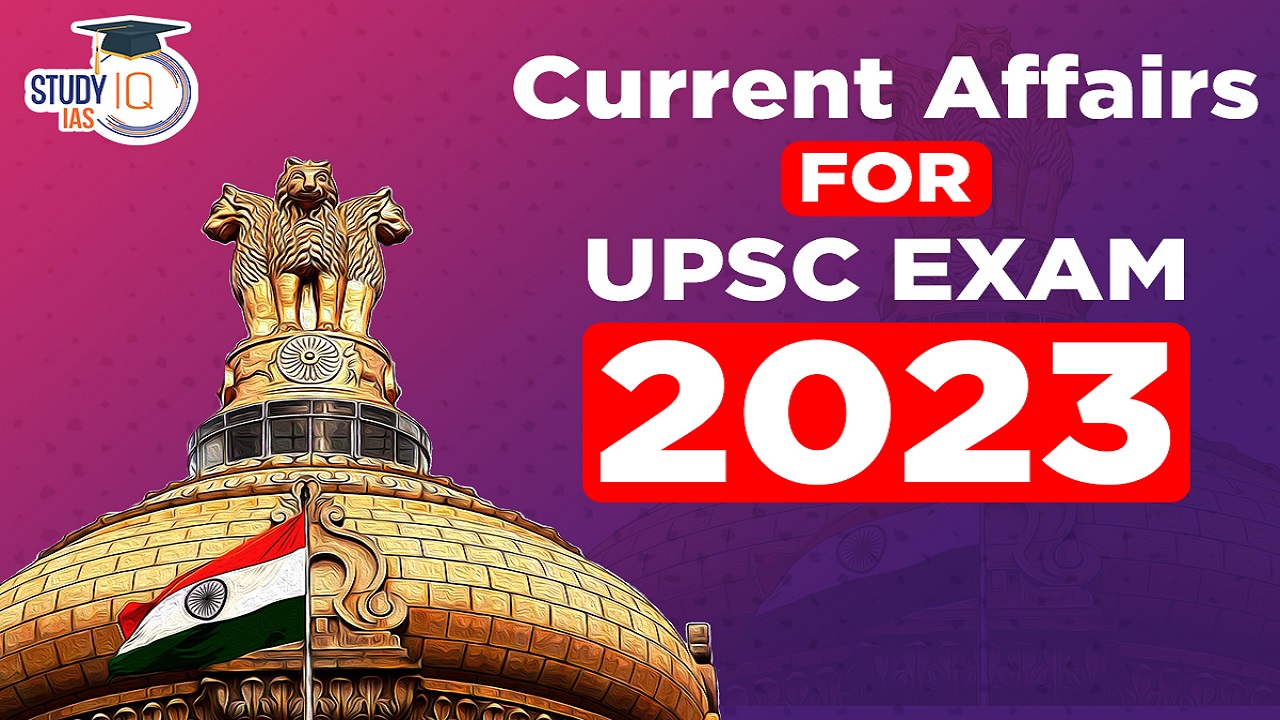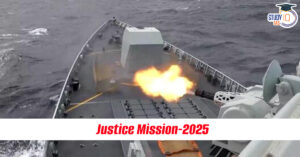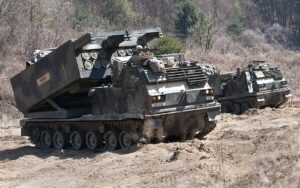Current Affairs 18th May 2023 for UPSC Prelims Exam
Pradhan Mantri Matsya Sampada Yojana
Context: Seven major field studies are being carried by the National Productivity Council to facilitate deliverables under Pradhan Mantri Matsya Sampada Yojana (PMMSY).
Pradhan Mantri Matsya Sampada Yojana (PMMSY)
- PMMSY: PMMSY is being implemented by the Department of Fisheries, Ministry of Fisheries, Animal Husbandry and Dairying, Government of India.
- PMMSY is a scheme to bring about Blue Revolution through sustainable and responsible development of fisheries sector in the country at an estimated investment of Rs. 20,050 crores.
- PMMSY is being implemented in all the States and Union Territories since FY 2020-21.
- Need: It is designed to address critical gaps in the fisheries value chain from fish production, productivity and quality to technology, post-harvest infrastructure and marketing.
- Significance: About 17% of agricultural exports of India is from fish and fish products and the fisheries sector provides livelihood to more than 2.8 crores of fishers and fish farmers.
- Against this backdrop, PMMSY offers a wide range of activities for the benefit of fishers, fish farmers, youth, women, entrepreneurs.
- PMMSY has facilitated cluster development, economies of scale, enhancing competitiveness of fisheries sector, generation of higher incomes to the stakeholders.
- The PMMSY has created a conducive environment for development of entrepreneurship and encourage private sector participation.
- Importance of Field Studies: The NPC is conducting field studies in seven areas such as best practices in fish marketing system of Andhra Pradesh and dissemination through workshop; agro-climatic zone-specific mapping of innovative fishing practices for enhancing production and productivity in Upper Gangetic Plain Region etc.
- The new field studies by NPC would help the Department further strengthen its mechanisms of delivery.

National Productivity Council (NPC)
- NPC is an autonomous organization under the Department for Promotion of Industry and Internal Trade, Ministry of Commerce & Industry, GoI.
- It was set up in 1958.
- NPC is a constituent of the Tokyo-based Asian Productivity Organisation (APO), an Inter-Governmental Body of which the Government of India is a founding member.
- Objectives:
- To promote innovation led productivity in a sustained manner in all spheres of national economy through holistic and inclusive approach by addressing the triple bottom line – Economic, Environmental and Social.
- To propagate productivity consciousness and culture amongst Govt., Business and Society.
- To act as a total solution provider for Industry, Services, and Agriculture sectors for augmenting productivity through Training, Consultancy and Research wherever needed through alliances and partnerships.
Current Affairs 17th May 2023 for UPSC Prelims Exam
Thawing of Permafrost
Context: According to a study published in the ‘Journal Nature Communications’, with rising global temperatures, thawing permafrost is likely to destabilize thousands of industrial sites in the Arctic, which could result in the spread of toxic substances across the region.
What is Permafrost?
- About: Permafrost is a permanently frozen layer on or under Earth’s surface. It consists of soil, gravel, and sand, usually bound together by ice.
- Features:
- Permafrost can be found on land and below the ocean floor.
- Its thickness can range from one meter to more than 1,000 meters.
- Upper layer of permafrost known as ‘Active Layer’, that seasonally thaws, allowing for plant growth; this is an essential part of the tundra ecosystem.
- Distribution:
- It is found in areas where temperatures rarely rise above freezing i.e., often found in Arctic regions such as Greenland, the U.S. state of Alaska, Russia, China, and Eastern Europe.
- Permafrost covers about 15% of the Northern Hemisphere or 11% of the global surface area.

What is Thawing Permafrost?
- With the rising temperatures due to global warming, the ice inside the permafrost melts, leaving behind water and soil, which can have dramatic impacts on our planet and the things living on it.
- Climate indicator: By analyzing the permafrost thawing trends, we can assess the global and regional effects of climate change.
- Climate tipping point: Researchers warn that permafrost thawing in Europe and Western Siberia is much closer to a climate tipping point than previously believed.
- In climate science, a tipping point is a critical threshold that, when crossed, leads to large and often irreversible changes in the climate system.
Consequences of thawing permafrost
- Intensifies Climate Change: The thawing of permafrost will worsen the effects of the climate crisis, because stored carbon is released in the process.
- Damage to infrastructure: As ice-filled permafrost thaws, it can turn into a mud slurry that cannot support the weight of the soil and vegetation above it and lead to collapse of Infrastructure such as roads, buildings, and pipes.
- Altered landscapes: Thawing permafrost alters natural ecosystems in many ways as well. It can create thermokarsts, areas of sagging ground, which may alter the flow of rivers and streams, degrade water quality, and impact aquatic wildlife.
- Impacts on human health:
- The thawing of permafrost in the Arctic regions also causes some river banks to erode making it harder to access clean water.
- Thawing permafrost exposes humans to the ancient bacteria, viruses and pathogens in the ice and the soil.
- According to a new study, thawing of permafrost could expose the Arctic population to much greater concentrations of the invisible, lung cancer-causing gas Radon.
International North-South Transport Corridor (INSTC)
Context: Recently, Iran and Russia agreed to collaborate on the construction of Rasht-Astara INSTC Rail Link.
- The railroad linking the two cities is part of the International North South Transportation Corridor (INSTC), a 7,200-kilometer multi-mode transit system that connects ship, rail, and road routes for moving cargo between India, Iran, Azerbaijan, Russia, Central Asia, and Europe.
About International North-South Transport Corridor (INSTC)
- It is a multi-modal transport corridor established in the year 2000 for the purpose of promoting transportation cooperation among the Member States.
- This corridor connects India-Ocean and Persian-Gulf to the Caspian Sea via Iran and is then connected to Saint Petersburg and North European via Russia.
- Aim: To reduce the carriage cost between India and Russia by about 30% and reduce the transit time from 40 days by more than half.
- The corridor is expected to consolidate the emerging Eurasian Free Trade Area.
- Member Countries: The agreement has been ratified by 13 countries namely, Azerbaijan, Belarus, Bulgaria, Armenia, India, Iran, Kazakhstan, Kyrgyzstan, Oman, Russia, Tajikistan, Turkey, and Ukraine.
Significance
- North-South corridor will become a safer and less expensive alternative to the Suez Canal to protect trade flows from geopolitical fallout.
- Existing transport infrastructure has been historically focused on the East-West connection, but new routes are gaining prominence due to global shifts in world markets towards China, South-East Asia and the Persian Gulf.
- Once chabahar port is constructed, india’s access to afghanistan and central asia will be easy as INSTC has Chabahar in its route.
- Offers a platform for India to closely collaborate with Russia, Iran and Central Asian republics.
Sagar Parikrama
Context: Recently, Union Ministry of Fisheries, Animal Husbandry and Dairying has announced the commencement of Phase-V of the Sagar Parikrama initiative.
About Sagar Parikrama
- It is an initiative to organize a sea voyage across all coastal states and union territories to support fishermen, fish farmers, and other stakeholders.
- It aims to address their concerns and facilitate their economic development by implementing various fisheries schemes and programs like PMMSY.
- It will focus on sustainable balance between the utilization of marine fisheries resources for food security of the nation and livelihoods of coastal fisher communities and protection of marine ecosystems.
- Implementing Ministry: Ministry of Fisheries, Animal Husbandry & Dairying.
- The Parikrama shall be accompanied by the State Fisheries officials, Fishermen representatives, Fish-Farmers entrepreneurs, stakeholders, professionals, officials and Scientists from across the nation.
- The Phase-V journey will encompass six locations across the states of Maharashtra and Goa.

Fertilizer Subsidy
Context: Recently, Union Government said total subsidy on fertilizer could touch ₹2.25-lakh crore during FY24.
- It includes ₹1.08-lakh crore for Khariff season of FY24. Out of this, ₹38,000 crore will subsidise phosphatic and potassic (P&K) fertilizers, while ₹70,000 crore will go toward the urea subsidy.
About Nutrient Based Subsidy (NBS) Scheme
- Fertilisers are provided at subsidised rates based on the nutrients contained, namely Nitrogen (N), Phosphate (P), Potash (K) and Sulphur (S). It does not include urea-based fertilisers.
- The subsidy on P&K fertilizers is announced by the Government on an annual basis for each nutrient on a per kg basis – which are determined taking into account the international and domestic prices of P&K fertilizers, exchange rate, inventory level in the country etc.
- It is being implemented from April 2010 by the Department of Fertilizers, Ministry of Chemicals & Fertilizers.
About One Nation One Fertilizer (ONOF)Scheme
- Aim: To standardize fertilizer brands across the country, regardless of the firm that manufactures it, by including all types of fertilizers, including DAP (di-ammonium phosphate), NPK (nitrogen, phosphorus, and potassium), and urea, under the brand name “Bharat.”
- It focuses on increasing transparency and affordability of fertilizers among the farmers by terminating black marketing of fertilizers by merging all brands under one umbrella brand.
- Under this scheme, companies are only permitted to advertise their name, brand, logo, and other pertinent product information on one-third of fertilizer bags under the new “One Nation One Fertiliser” initiative.
- The “Bharat” brand and Pradhanmantri Bharatiya Jan Urvarak Pariyojana logo will be required to be exhibited on the remaining two-thirds of the space.
- About Pradhanmantri Bharatiya Janurvarak Pariyojana: Under it, the Union government reimburses fertilizer companies for selling their products to cultivators at lower-than-market prices.


 National Technology Readiness Assessment...
National Technology Readiness Assessment...
 Justice Mission-2025: China’s Live-Fir...
Justice Mission-2025: China’s Live-Fir...
 Suryastra: First Made-in-India Long-Rang...
Suryastra: First Made-in-India Long-Rang...

























